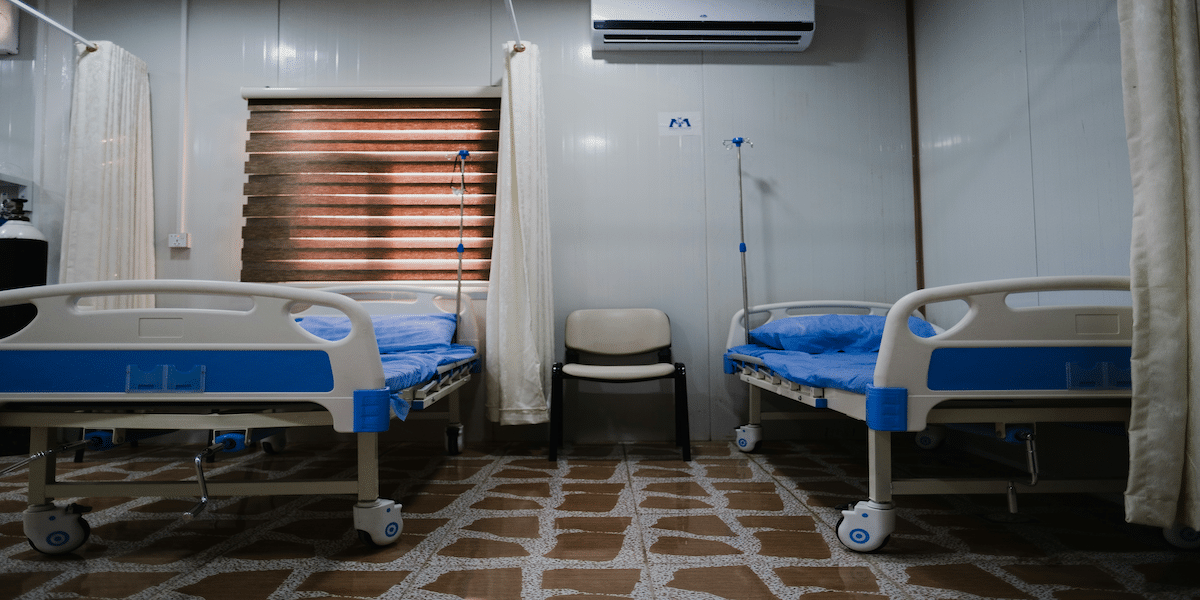Image commercially licensed from Unsplash
Getting enough sleep is crucial to your health. When you’re asleep, your body and mind work together to restore and sustain optimal health. What occurs to you when you sleep can have a significant impact on how you feel when you’re up. Bedridden patients who have gone through serious medical conditions are subjected to a variety of unpleasant experiences. They have trouble falling or staying asleep. Many things might cause this, such as physical or auditory distress or nervousness.
The layout of a traditional bed is one reason patients may have trouble falling asleep there. Typical home beds are notoriously awkward and unsupportive for a patient with immobility problems. Because of this, it may be challenging for patients to establish a restful sleeping position. Traditional mattresses are also notoriously noisy, making it difficult to get any shut-eye. A patient’s ability to rest and recuperate while in a hospital bed is greatly enhanced by the numerous medical conveniences available to them. This article will delve into the specifics and impact of the hospital bed on the quality of sleep a patient experiences.
What Makes Hospital Beds so Crucial for a Patient’s Sleep?
Patients can rest easier and get a better night’s sleep on a hospital bed. Hospital bed rental Toronto provides hospital beds with softer mattresses, movable headboards, and footrests all contribute to a more restful night’s sleep. In addition to facilitating better sleep, modern hospital beds are noticeably quieter than their predecessors. Hospital bed rental Toronto offers medical beds at reasonable prices. Patients having serious medical conditions can get them on rent until they feel better. Here’s how a hospital bed fits for a patient’s sleep needs.
1. Encouraging Well-being and Ergonomics
The ability of adjustable hospital beds to improve comfort and ergonomics is a major factor in enhancing the quality of sleep. Patients can discover their ideal resting posture thanks to the adjustable features of these beds. Patients have the option of altering the bed’s height in a variety of ways, including by raising the head, the legs, or both, to find the optimal position for comfort and support.
Patients in need of comfort due to pain, postoperative recovery, or long-term illness should be given special attention. The ability to adjust the bed’s position is helpful for managing pain and reducing discomfort. Patients find respite from the tension placed on their muscles and joints by staying in an uncomfortable position for long periods of time. The hospital bed rental Toronto helps people get better sleep so they can put their bodies in a better position to heal and recover.
2. Boosting Respiratory Function
A patient’s quality of sleep and health in general can be negatively affected by respiratory problems. The use of an adjustable hospital bed can help patients with breathing problems and improve their quality of sleep. These beds are designed to make breathing easier for people who suffer from breathing problems including sleep apnea or chronic obstructive pulmonary disease (COPD) by raising the upper body.
The health repercussions of sleep apnea, in which breathing is repeatedly stopped throughout the night, are serious. Beds that may be adjusted to elevate the upper body have been shown to minimise both the number and severity of sleep apnea episodes. These mattresses help people with sleep apnea breathe easier and get more oxygen by keeping their airways unobstructed while they sleep.
Adjustable mattress firmness and air-filled portions are only two of the pressure equalisation elements found in modern hospital beds. Patients can sleep more soundly and reduce their risk of bedsores with the use of this technology. They aid in relieving chronic back pain by redistributing weight away from painful pressure points.
3. Positioning
Hospital beds can be adjusted to a variety of settings to let patients get some shut-eye. These beds provide individualised placement, which reduces pain, lessens snoring, and protects against respiratory issues. Adjustable beds have been shown to dramatically enhance sleep quality and decrease sleep-related symptoms in hospitalised patients.
A bed with a contour that can be adjusted to accommodate multiple positions (such as sitting, knee-raising, etc.) is convenient for both patients and medical staff. The need to reposition patients in bed during the day can be reduced with the use of a contour feature that prevents patients from sliding (towards the bed foot) as the bed is raised and lowered.
4. Reducing Ambient Noise
It is another important step towards helping patients get a good night’s rest. Hospital beds are designed to be as quiet as possible, thus they typically feature technologies like soundproofing and low-noise motors. The hospital beds have been shown to alleviate pain, anxiety, and other symptoms by facilitating restful sleep. Patients’ health and well-being can benefit from hospital beds since they facilitate a speedier recovery.
5. Pain Alleviation
Adults, on average, require between 7 and 9 hours of sleep per night, as stated by the National Sleep Foundation. Lack of sleep can have negative effects on your health, including drowsiness, irritability, trouble focusing, and clouded decision-making. A better night’s sleep for patients in hospitals can help alleviate their pain, worry, and other symptoms.
A study published in the journal “Sleep” indicated that hospital beds improved sleep quality compared to regular beds.
Improving productivity and contributing considerably to the decrease of linked musculoskeletal illnesses among healthcare providers and patients are both outcomes of careful consideration of specific design and its characteristics.
Concluding Remarks
Given the importance of sleep, it’s only reasonable to optimise your bedroom for maximum shut-eye. When you sleep, your brain is able to repair itself from the day’s challenges. The quality and length of one’s sleep has a definite effect on one’s ability to perform and make decisions. A good night’s sleep can make you feel refreshed and energised, and it can even help you avoid or better deal with health problems. If you get enough shut-eye, you’ll be more productive and have better judgement the next day. Getting enough shut-eye can improve your mood, energy level, and social interactions. Disease resistance is another area in which sleep plays a role.
Select the features of a home hospital bed that will provide you with the highest level of comfort and care, allowing you to obtain the deepest, healthiest sleep possible while you recover. Since not all hospital beds come with their own dedicated mattresses, it is crucial to examine what you need in a mattress for your hospital bed as well, and we’ve gone over the many kinds of hospital beds.

















